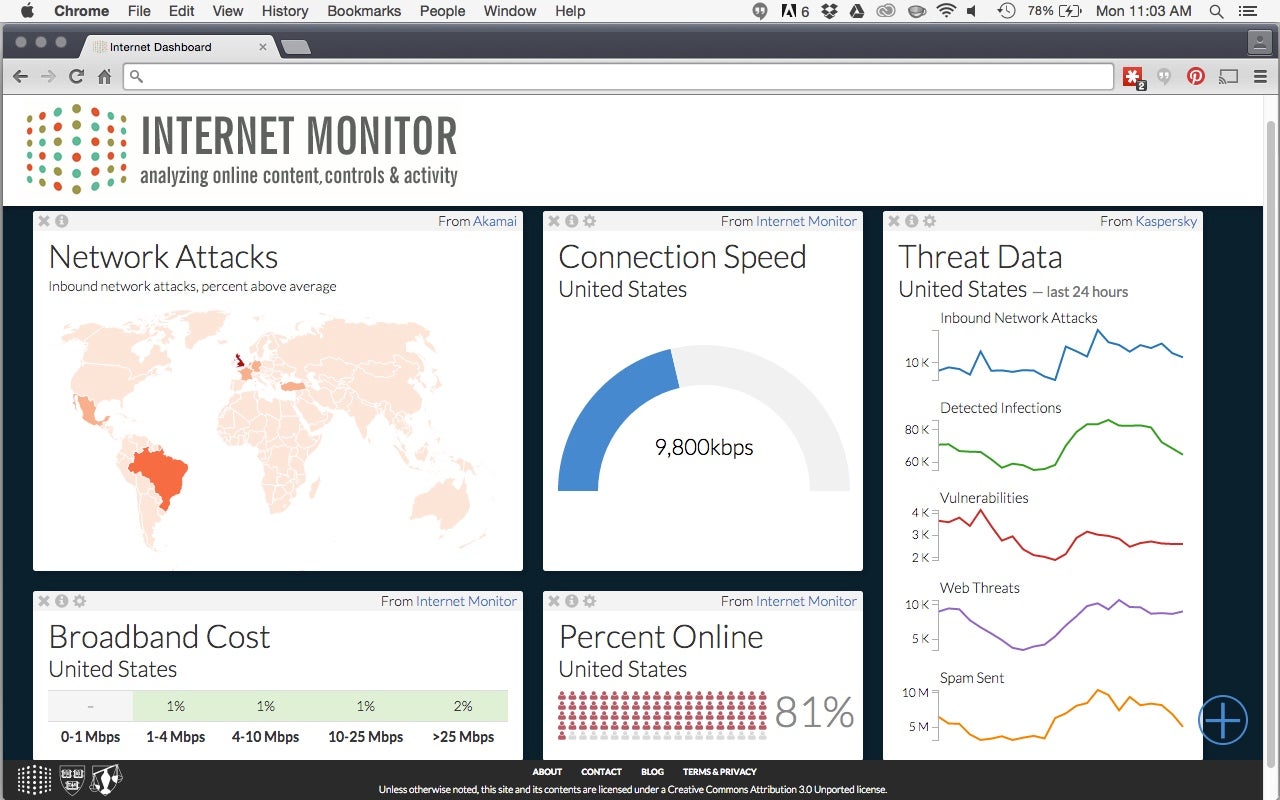Since 2014, the Internet Monitor project at the Berkman Center for Internet & Society has been collecting data about Internet access and analyzing what different communities around the world are saying.
Internet Monitor’s online data platform presents and analyzes data from about 100 countries with the two-part goal of providing better data for better decision making, and conducting original research that analyzes this data to see what it says about the status of the Internet.
Data comes in from a number of sources, such as the International Telecommunications Union, Akamai, and NetIndex, and Berkman projects, including those that monitor the mostly anonymous online world of Arab atheists or the growing list of Internet regulations in Russia.
This fall Internet Monitor plans to release a new platform for displaying all this data and more on one dashboard.
“The really exciting thing is that the dashboard format lets us pull in data that we don’t currently have a way to represent or to display,” said Internet Monitor’s senior project manager Rebekah Heacock Jones. “The new dashboard will allow people to see information like the most recent news topics in China, rather than just fixed statistics like the Internet penetration rate for China in 2012.”
Heacock Jones said she hopes the dashboard format will draw in audiences who want to be able to engage more with the data. It can be useful to journalists as a monitoring and storytelling platform, and it’s customizable for someone interested in one specific location or topic. Users are not only able to arrange the data provided in a way that’s useful for them, they’re also invited to contribute data. As such, the new dashboard will open up new space for data-sharing partnerships with a wide variety of companies and partner organizations.
“There’s a lot of important data out there, but much of it is inaccessible to policymakers and the public—it’s in corporate hands, or it’s sprinkled around on lots of different websites. If you don’t know where to go, it’s really hard to find.” she said. “We’re hoping that by putting this focus on data we can encourage people who do have good data to make it more publicly accessible. And then we can also make that data more easily available for policymakers and others who are making decisions.”
As the dashboard emerges on the scene, Internet Monitor will continue publishing reports and blog posts. A report on the Twittersphere in China will come out this summer, followed by a report on the Twittersphere in Saudi Arabia.
Check out the video below to learn more about Internet Monitor.
